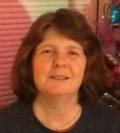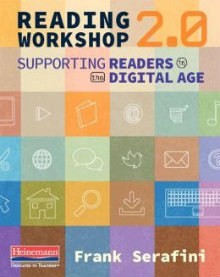Reading Workshop for Web 2.0
Reading Workshop 2.0: Supporting Readers in the Digital Age
By Frank Serafini
(Heinemann, 2015 – Learn more)

Building on his previous writing about reading workshop, Frank Serafini discusses how to make the reading workshop thrive in the digital age.
There are two main sections to Reading Workshop 2.0. The first is theoretical and attempts to fill in the blanks if you are not familiar with the author’s previous work, pointing toward the need to transform the reading workshop for the 21st century. To address the rapid advances in technology, Serafini states that he has created a web-based resource that “will continue to be updated with the newest, most effective resources for supporting teachers as they implement a reading workshop 2.0 approach.”

(1) Web 2.0 features active involvement of users whereas with Web 1.0 users were primarily passive consumers of information, and
(2) the digital text in the Web 2.0 world is multimodal, and “comes alive.” He notes that while the multimodal world may be more interactive, it also has the potential to provide distractions to the reading task.
In Part 2, Serafini addresses four major components of reading in a Web 2.0 world with respect to digital text: Accessing and Navigating Digital Texts; Archiving and Sharing Our Reading Lives; Commenting on and Discussing Digital Texts; and Interpreting and Analyzing Digital Texts.
Beginning with the chapter on Accessing and Navigating Digital Text, the author provides a number of online resources and apps, key questions to consider, and specific lessons (found at the end of each chapter). While the specific lessons may or may not fit your classroom, they provide a framework for the content, and the online and app resources are extensive and well summarized.
Overall, Reading Workshop 2.0: Supporting Readers in the Digital Age is a useful tool for helping teachers begin integrating technology into their workshop reading instruction. Serafini provides plenty of reviewed online resources (which he promises to keep updated with the web link provided in the book) that will support teachers as they become more comfortable with transforming their reading instruction in a Web 2.0 world.
Dr. Laura Von Staden is a Special Education Middle School Teacher in Tampa, Florida. She serves on numerous committees both at her school and within her district and works closely with the local university where she is a Professional Practice Partner and a master mentor. Dr. Von Staden also facilitates both online and face-to-face Professional Development for her school district.


































